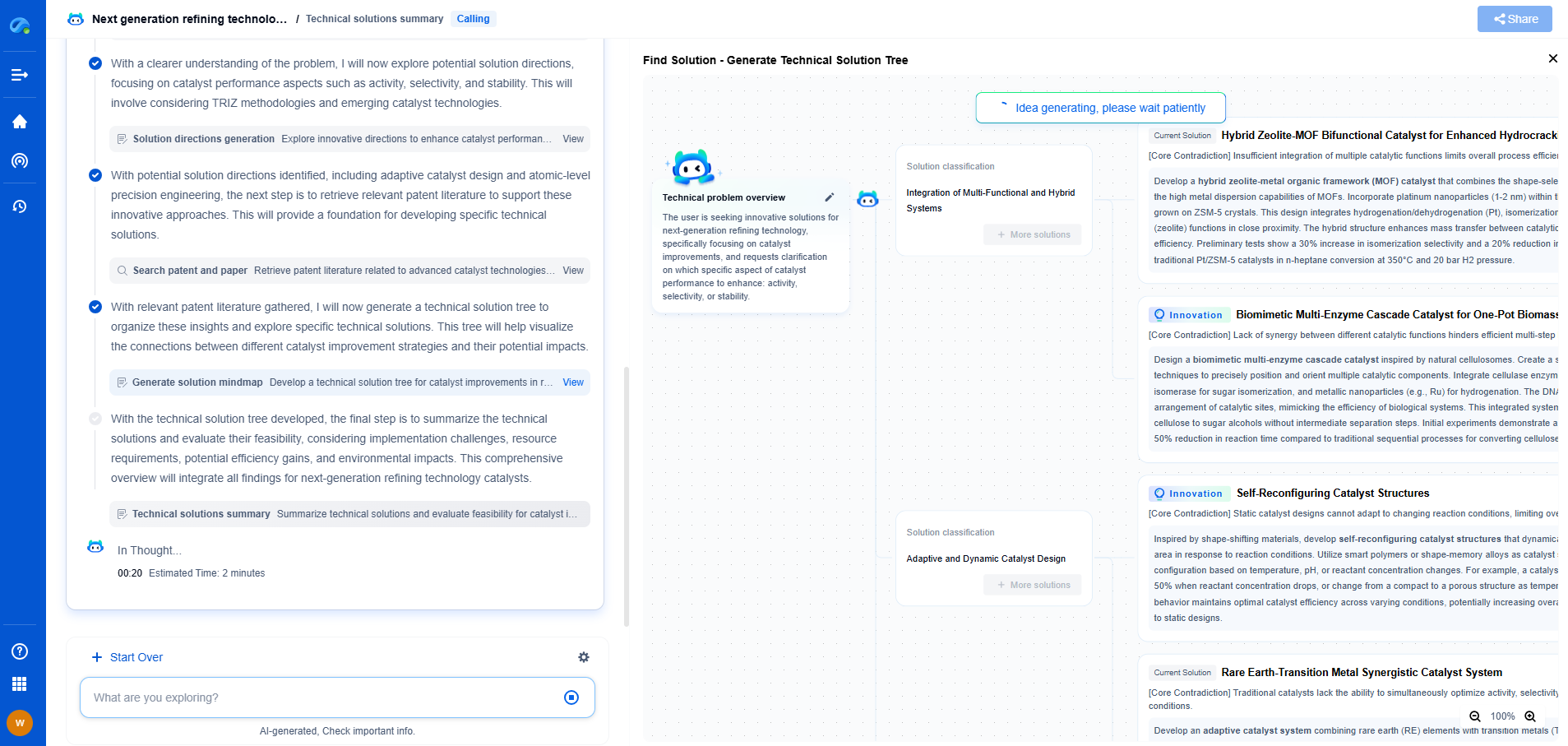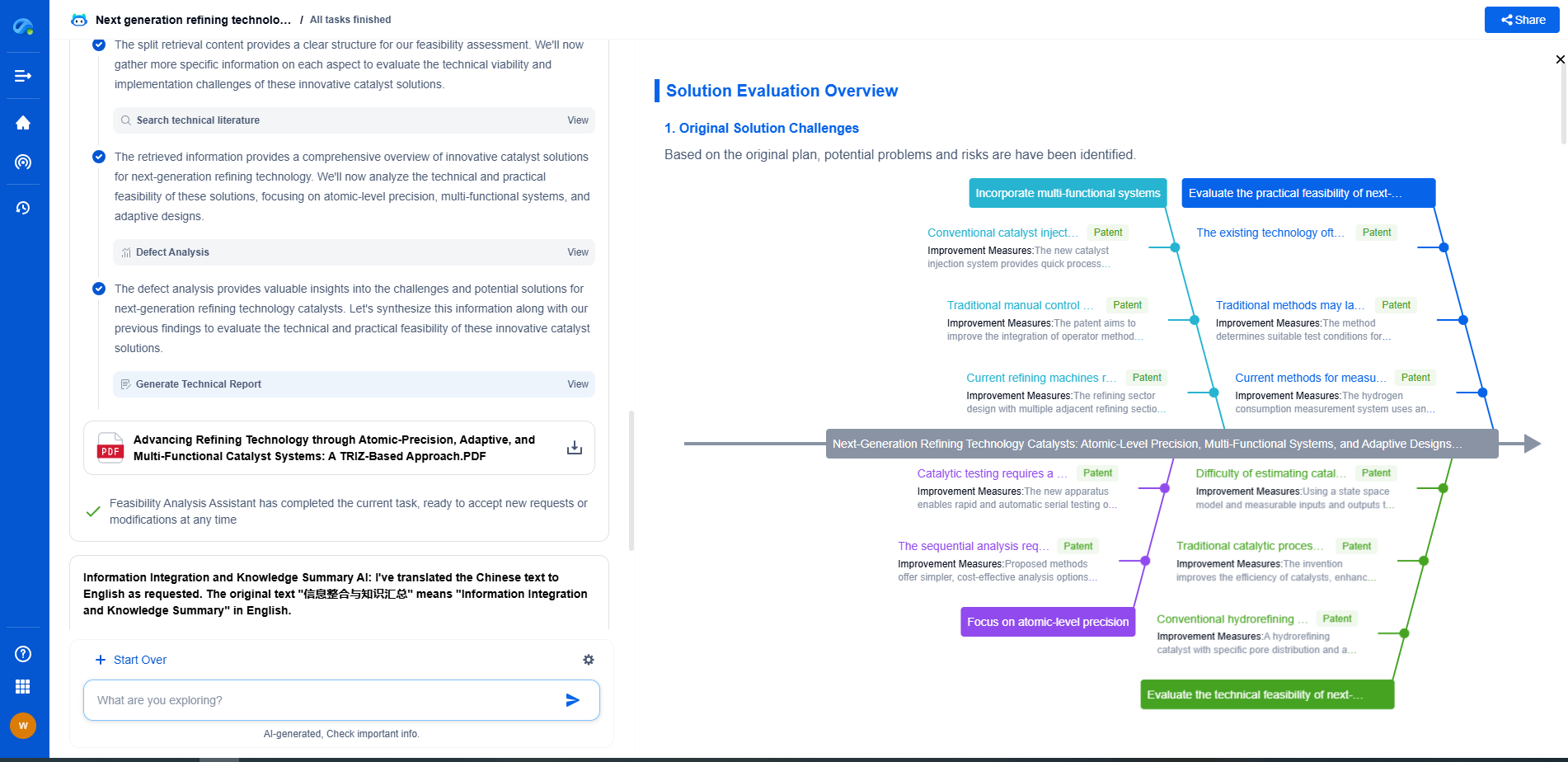BIPV vs. Conventional Rooftop PV: Which Is Better for New Construction?
JUL 22, 2025 |
As the world moves towards sustainable energy solutions, solar power has emerged as a leading contender in reducing carbon footprints and meeting energy needs. In the realm of solar energy, photovoltaic (PV) systems have gained significant traction. However, a key decision facing builders and architects in new construction projects involves choosing between Building-Integrated Photovoltaics (BIPV) and Conventional Rooftop PV systems. Both systems have their unique advantages and challenges, making this choice crucial for optimizing both energy efficiency and architectural aesthetics.
Understanding BIPV
Building-Integrated Photovoltaics (BIPV) represent a cutting-edge approach to solar energy integration. BIPV systems are designed to be seamlessly embedded into the building's structure, serving both as a functional energy generator and as a construction material. They can replace conventional building materials in parts such as roofs, facades, and skylights, allowing for a harmonious blend of energy generation and architectural design.
Advantages of BIPV
1. Aesthetic Appeal: BIPV systems offer a sleek and modern appearance, integrating seamlessly into the building's design without compromising aesthetics. This makes them particularly appealing for high-end residential projects or commercial buildings aiming for a futuristic look.
2. Space Efficiency: By integrating solar panels into the building materials, BIPV systems make efficient use of space. This is especially beneficial in urban areas where space is at a premium.
3. Multi-functionality: BIPV systems serve dual purposes – as both the external envelope of the building and as a source of renewable energy. This dual functionality can potentially reduce the cost of materials and labor in new construction projects.
4. Enhanced Property Value: The modern and sustainable features of BIPV can enhance the market value of a property, attracting potential buyers or tenants seeking eco-friendly buildings.
Challenges of BIPV
1. Higher Initial Costs: The initial investment for BIPV systems is typically higher than conventional PV due to the integration of technology into building materials and the need for custom designs.
2. Limited Efficiency: BIPV panels may have lower efficiency rates compared to traditional PV modules, mainly due to constraints in design and optimal positioning.
3. Complex Installation: The integration of BIPV into the building structure requires specialized knowledge and precision, which can complicate the construction process.
Exploring Conventional Rooftop PV
Conventional Rooftop PV systems are the more traditional approach to solar energy utilization. These systems involve mounting standard solar panels onto the roof's surface, allowing for energy generation without altering the fundamental design and structure of the building.
Advantages of Conventional Rooftop PV
1. Cost-Effectiveness: Conventional rooftop PV systems are generally less expensive upfront compared to BIPV. The technology is well-established, leading to a wider range of options and competitive pricing.
2. Proven Efficiency: Rooftop PV systems are known for their high efficiency, as panels can be optimally tilted and oriented for maximum sunlight exposure.
3. Flexibility and Adaptability: These systems can be easily installed on almost any existing roof, making them a versatile choice for retrofitting as well as new construction.
4. Simplicity: Installation and maintenance processes for rooftop PV are straightforward, requiring less specialized expertise compared to BIPV systems.
Challenges of Conventional Rooftop PV
1. Aesthetic Limitations: While functional, traditional solar panels may not blend seamlessly with the architectural design, potentially impacting the visual appeal of the building.
2. Space Requirements: These systems require adequate roof space for installation, which might be a constraint in smaller buildings or those with limited roof area.
3. Potential Structural Impact: The additional weight and installation of rooftop panels might necessitate structural reinforcements, adding to construction complexity and cost.
Making the Choice: BIPV or Conventional Rooftop PV?
Choosing between BIPV and conventional rooftop PV systems for new construction projects hinges on several factors:
1. Project Budget: For projects where budget constraints are a primary concern, conventional rooftop PV systems might be more viable due to their lower initial costs.
2. Architectural Goals: If design and aesthetic integration are prioritized, BIPV could offer a more harmonious solution that aligns with architectural vision.
3. Energy Efficiency Goals: For projects with a strong emphasis on energy efficiency, conventional rooftop PV systems might offer better performance due to their higher efficiency rates.
4. Long-term Value: Consider the potential for increased property value and appeal, especially for commercial and high-end residential properties where BIPV systems can be a unique selling point.
Conclusion
Both BIPV and Conventional Rooftop PV systems offer valuable benefits for new construction, each catering to different project needs and priorities. While BIPV systems excel in aesthetics and integration, conventional rooftop PV systems offer cost-effectiveness and efficiency. Ultimately, the choice between the two should align with the specific goals of the construction project, weighing the importance of aesthetics, budget, energy efficiency, and long-term value. Whether opting for a seamless architectural integration or a time-tested approach, embracing solar technology is a step towards a more sustainable future.
As solar technology races ahead—from perovskite cells to tandem architectures, from anti-reflective coatings to transparent electrodes—staying on top of fast-moving innovation has become a strategic imperative.
Patsnap Eureka, our intelligent AI assistant built for R&D professionals in high-tech sectors, empowers you with real-time expert-level analysis, technology roadmap exploration, and strategic mapping of core patents—all within a seamless, user-friendly interface.
⚡ Ready to accelerate your solar innovation journey? Try Patsnap Eureka today and let AI help you harness the full power of the sun—and your IP strategy.
- R&D
- Intellectual Property
- Life Sciences
- Materials
- Tech Scout
- Unparalleled Data Quality
- Higher Quality Content
- 60% Fewer Hallucinations
Browse by: Latest US Patents, China's latest patents, Technical Efficacy Thesaurus, Application Domain, Technology Topic, Popular Technical Reports.
© 2025 PatSnap. All rights reserved.Legal|Privacy policy|Modern Slavery Act Transparency Statement|Sitemap|About US| Contact US: help@patsnap.com

